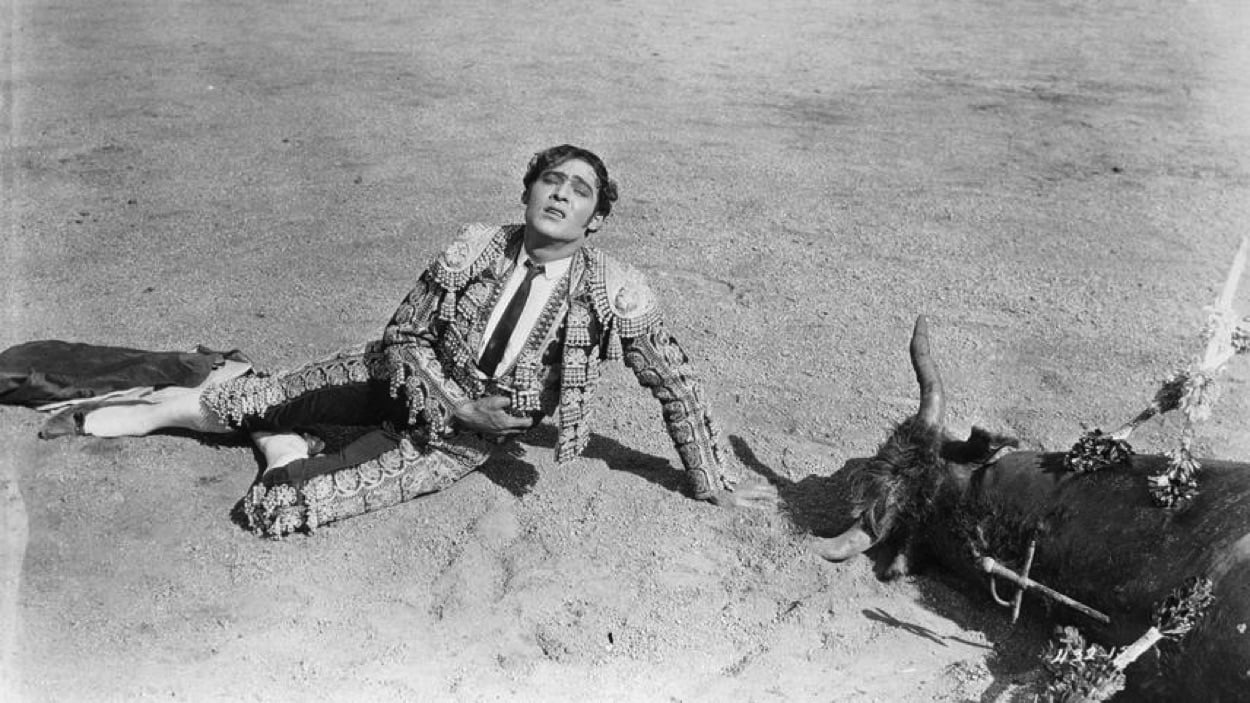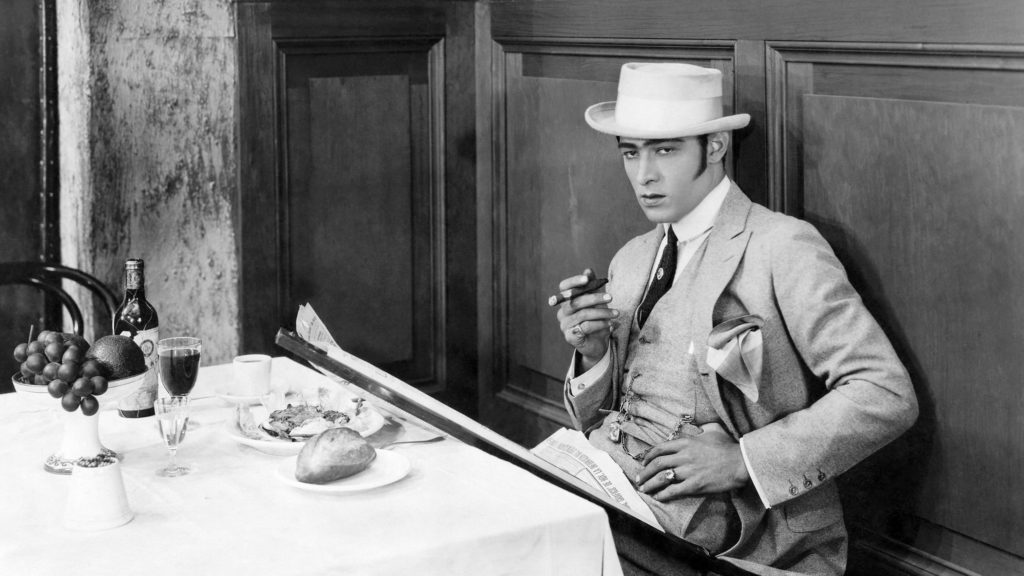1922’s Blood and Sand was Rudolph Valentino’s third big hit movie in two years and it deserved to be. A grand, well-appointed, beautiful-looking, subtly-acted adventure rippling with themes and sub-themes and with properly fleshed-out side characters, it’s got more going on under the hood than at first appears.
Famous Players-Lasky (later to become Paramount) had been caught on the hop by Valentino’s success and insisted that he carry on with the schedule already mapped out for him – which is why you’ll find a number of B movies sprinkled along the way between The Four Horsemen of the Apocalypse, his breakthrough, and Blood and Sand. Though Valentino was hot stuff (and knew it), he was being grotesquely underpaid compared to other big stars, which only made this notoriously difficult star even more difficult to work with.
Trouble was brewing but it was all in the (near) future. First, Blood and Sand, which was meant to have been filmed in Europe but ended up being shot on a Hollywood back lot and with Fred Niblo as director. Valentino had been promised Spain and George Fitzmaurice in the chair but in the end Niblo turned out to be an inspired choice. Looking back from 100 years on, in fact, Niblo seems like the obvious choice – he’d already directed Douglas Fairbanks in The Mark of Zorro and The Three Musketeers, both of them all-action paeans to athletic masculinity and massive successes (as Ben-Hur would be a few years in the future).
Anyway, the story. It’s the rags to riches to tragedy tale of a poor, mother-loving Spaniard called Juan Gallardo, whose dreams about being a toreador suddenly come true. One day he’s in patched trousers, the next he’s in a second-hand toreador’s outfit, the day after that he’s the toast of all Spain. But with success comes distraction in the shape of milf-y widow Doña Sol, when really Juan (Valentino) should be at home with his childhood sweetheart wife, Carmen (Lila Lee).
As well as the wife and the other woman, there are bulls to be fought, in scenes which use actual footage craftily spliced in (I say craftily, but though Dorothy Arzner’s footage and clever editing means she’s now retrospectively credited as a co-director, it’s really obvious when the additional material is being used).
Valentino is handsome, lithe, an entirely plausible toreador and puts in a very nice low-key performance that’s exactly the opposite of what a silent movie performance is often characterised as. You could watch it for his outfits alone – wait for the all-white one and the gossip about Valentino’s sexual preferences become easier to fathom.
There’s an animal welfare angle, which might surprise some. In fact from the opening intertitle onward, there is constant reference to the cruelty of bullfighting and Niblo gives us money shots of “blood and sand” – a dead bull being dragged out of the ring, leaving a long dark wet trail behind it.
There’s a class politics angle too, which is also unusual – the bandit Plumitas (Walter Long) at one point makes a grand speech about poor boys like himself and Juan having to face death to make their way in the world.
Around the periphery there are neat thumbnails of Juan’s retinue once he’s made it big – the other toreadors, picadors, hangers-on and well-wishers who make up what looks very like a modern music star’s entourage – and Nita Naldi gets lots of screentime as the widow with a thing for men. The fact that she’s not had a toreador is in itself enough to mark out Juan as fair game, never mind that this one is also handsome. Later, watch how, when the far less attractive Plumitas enters the scene, she starts turning herself towards him, the thought bubble, “A bandit! I’ve never had a bandit!” almost appearing in the air between them.
The camera is static but Niblo carefully arranges scenes to get maximum storytelling and character-building mileage out of his tableaux. Occasionally he’ll use a cutaway to give us conspiratorial “here’s what they really think” reveals, and he has an impressive and unusual “less is more” way with a reaction shot.
The lighting, by Alvin Wyckoff, is picturesque and much, much better than a film of this vintage needed to be, and now that the film has been restored to 4k you can really see what Wyckoff is after – Old Masters looks here and there.
It’s emblematic of the whole film, which goes all in. Doña Sol’s boudoir when we finally get to see it (marvel at Valentino’s “scared boy” acting as he enters it) is a Turkish bazaar of a room, crammed with swags and frippery, with stuff all over every wall and surface. Doña Sol herself is depicted reclining on a chaise longue smoking a cigarette in a holder, and is being waited on by a man dressed as a genie complete with sparkly turban. It’s extravagantly mad.
Even at the time it was a glimpse of an exotic world. Now, 100 years on, the effect is squared. That Blood and Sand is also an entirely enjoyable entertainment and has something to say – it’s more than anyone really has a right to expect.
Blood and Sand – Watch it/buy it at Amazon
I am an Amazon affiliate
© Steve Morrissey 2022


